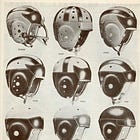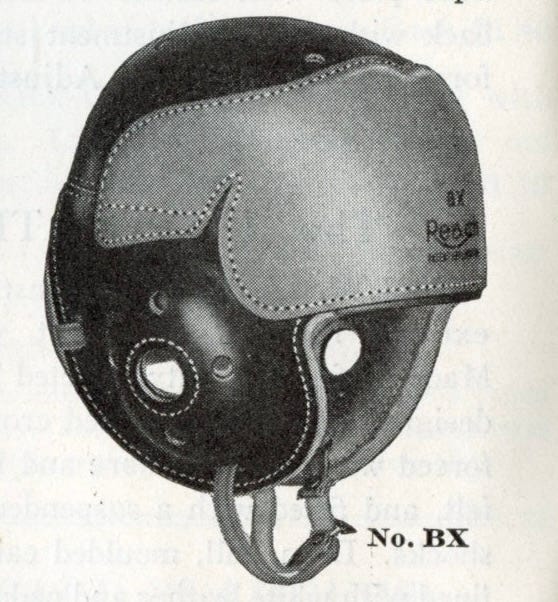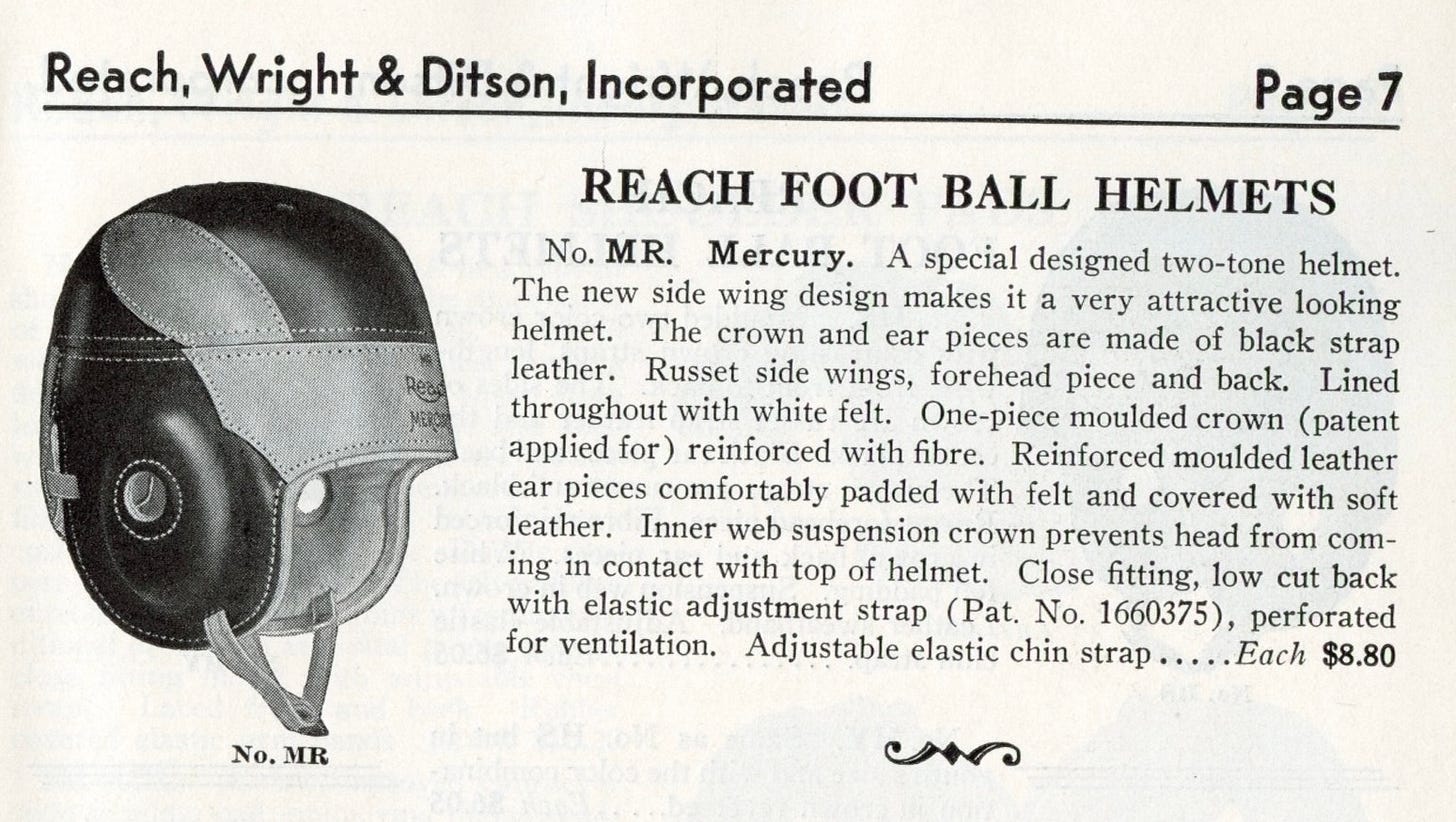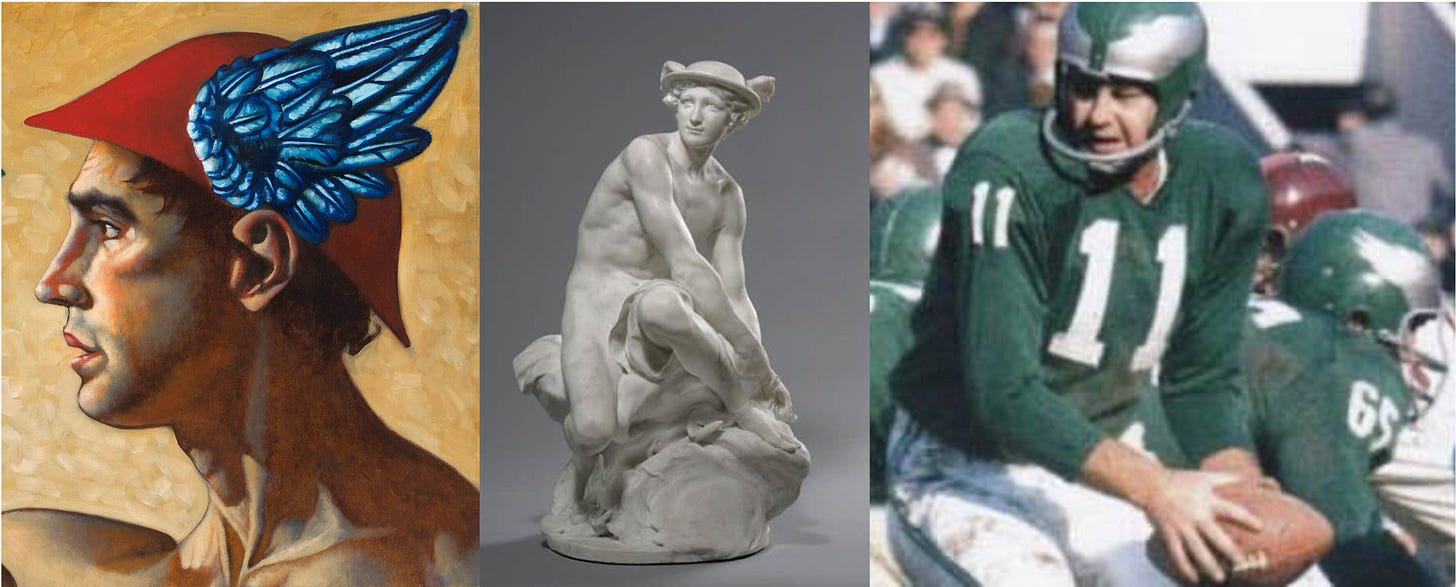Today's Tidbit... On A Wing and a Player
Knowledge advances incrementally, one step or Tidbit at a time, and an example of that incrementalism is our understanding of the whens and whys of winged helmets. I previously published Tidbits about winged helmets, noting that they originated in 1930 to better pad the front of helmets and protect the foreheads of the era.
Nothing I've encountered has changed that understanding, but both Tidbits focused on the aesthetics of the various wing designs and assumed the wings were nothing more than design flair added to the functional forehead pad. However, a recent catalog acquisition points out that early wings had a functional purpose—or, at least, some of them did.
A newly acquired 1932 Reach Wright & Ditson Fall & Winter Catalog included a winged helmet design I had seen in images but not in a catalog. The images below are action shots of players wearing helmets with broad, rounded wings on the side and a design that extends above the forehead in front.
The 1932 Reach Wright & Ditson Fall & Winter Catalog had their version of this design, the BW model, and described it as having a "T-Model front piece of leather."
Further down in the description of the BW, the catalog informs readers the helmet has:
Double reinforced front coming down over the forehead and extending over temples, giving double protection.
That nugget tells us early wings protected players' temples, so the wings were functional and had aesthetic value. That makes today's Michigan helmets (and others like them) an example of a skeuomorph or a design element that transitioned from a functional purpose to purely decorative. (Thanks to Paul Lukas at Uni Watch for introducing "skeuomorphs" to me in his coverage of football helmet nose bumpers.)
Of course, if some extra temple padding is useful, then a lot of padding on the front and side of the helmet has more value, as seen in the BX model.
However, the real winner in the 1932 catalog appears on the following page: the MR model or Mercury design.
The Mercury wing design harkens back to the winged hat worn by Mercury, a Roman god, or Hermes, his Greek predecessor. The Mercury model appeared 25 years before the 1957 Philadelphia Eagles helmet, the first helmet with wings as logos I know of.
Regular readers know that the earliest use of logos on football helmets I've found is UChicago in 1921 and 1922 and Washington in the early to mid-1930s, both appearing at the back of the helmet. Other schools had small logos cut out of the front of their winged pads in the 1930s.
Since the Mercury model was in the Reach catalog for at least three years, you must assume someone bought the darn thing. If a team that wore them had a winged creature as its mascot, it could stake claim to being the first to wear a winged logo on its helmet.
So, if you know of a team that wore Mercury helmets in the 1930s, and especially if you have links or images, please comment below to contribute to the incremental advancement of football history, such as it is.
Football Archaeology is reader-supported. Click here to buy one of my books or otherwise support the site.










Wow. What an education this catalog has given us all! Love the Mercury style. I hope someone comes up with a game used image.